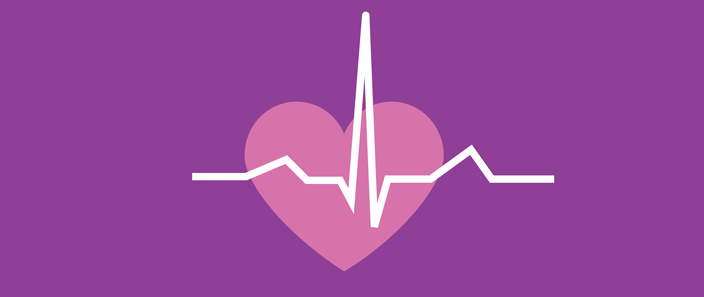4.2 Stress echocardiography, 18 years and over
The Third Australian Atlas of Healthcare Variation investigates healthcare use in four clinical areas. Stress echocardiography is included in Chapter 4, Cardiac tests.

Why is this important?
Cardiac stress tests and imaging are used in people with symptoms suggestive of coronary heart disease for accurate diagnosis, risk assessment and treatment planning (for example, treatment with revascularisation by stenting or bypass surgery). Equitable access to cardiac imaging is important for improving cardiac care and outcomes in people at high risk of coronary artery disease in Australia.
Appropriate use of these tests is also important for the sustainability of the health system, as they account for a substantial portion of the health budget. Use of cardiac imaging has grown at about twice the rate of treatment with revascularisation – suggesting that some testing is unnecessary and that healthcare resources could be better used.
Rates of use of stress echocardiography have risen rapidly in recent years, with variation in use across Australia. There are concerns about both overservicing in some areas and underservicing in others.
Maps and graphs
Rates by local area
Rates by state and territory
//viz.aihw.gov.au/t/Public/views/SOP_Stress_echocardiography/Stateandterritory?iframeSizedToWindow=true&:embed=y&:showAppBanner=false&:display_count=no&:showVizHome=no&:origin=viz_share_link
Rates by remoteness and SES
//viz.aihw.gov.au/t/Public/views/SOP_Stress_echocardiography/RemotenessandSES?iframeSizedToWindow=true&:embed=y&:showAppBanner=false&:display_count=no&:showVizHome=no&:origin=viz_share_link
Map of rates across Australia
Download the data
Download the data sheet for stress echocardiography:
About the data
About the data - stress echocardiography, 18 years and over
Data are sourced from the Medicare Benefits Schedule (MBS) dataset. This dataset includes information on MBS claims processed by the Australian Government Department of Human Services. It covers a wide range of services (attendances, procedures, tests) provided across primary care and hospital settings.
The dataset does not include:
- Services for publicly funded patients in hospitals
- Services for patients in hospital outpatient clinics where claims are not made to the MBS
- Services covered under Department of Veterans’ Affairs arrangements.
Rates are based on the number of MBS-subsidised services for stress echocardiograms per 100,000 people aged 18 years and over in 2016–17.
Because an MBS claim is included for each service rather than for each patient, patients who receive any of the services listed in this data item more than once in the financial year will have more than one MBS claim counted.
The analysis and maps are based on the residential address of the patient recorded in the MBS claim and not the location of the service.
Rates are age and sex standardised to allow comparisons between populations with different age and sex structures.
This analysis was not undertaken by Aboriginal and Torres Strait Islander status because this information was not available for the MBS data at the time of publication.
About the Atlas and how to interpret the data visualisations
This document outlines how to interpret the data correctly and explains the limitations of the data prior to using the Atlas:
Data specifications
Rates by local area
Rates by state and territory
//viz.aihw.gov.au/t/Public/views/SOP_Stress_echocardiography/Stateandterritory?iframeSizedToWindow=true&:embed=y&:showAppBanner=false&:display_count=no&:showVizHome=no&:origin=viz_share_link
Rates by remoteness and SES
//viz.aihw.gov.au/t/Public/views/SOP_Stress_echocardiography/RemotenessandSES?iframeSizedToWindow=true&:embed=y&:showAppBanner=false&:display_count=no&:showVizHome=no&:origin=viz_share_link
Map of rates across Australia
Download the data
Download the data sheet for stress echocardiography:
About the data
About the data - stress echocardiography, 18 years and over
Data are sourced from the Medicare Benefits Schedule (MBS) dataset. This dataset includes information on MBS claims processed by the Australian Government Department of Human Services. It covers a wide range of services (attendances, procedures, tests) provided across primary care and hospital settings.
The dataset does not include:
- Services for publicly funded patients in hospitals
- Services for patients in hospital outpatient clinics where claims are not made to the MBS
- Services covered under Department of Veterans’ Affairs arrangements.
Rates are based on the number of MBS-subsidised services for stress echocardiograms per 100,000 people aged 18 years and over in 2016–17.
Because an MBS claim is included for each service rather than for each patient, patients who receive any of the services listed in this data item more than once in the financial year will have more than one MBS claim counted.
The analysis and maps are based on the residential address of the patient recorded in the MBS claim and not the location of the service.
Rates are age and sex standardised to allow comparisons between populations with different age and sex structures.
This analysis was not undertaken by Aboriginal and Torres Strait Islander status because this information was not available for the MBS data at the time of publication.
About the Atlas and how to interpret the data visualisations
This document outlines how to interpret the data correctly and explains the limitations of the data prior to using the Atlas:
Data specifications
